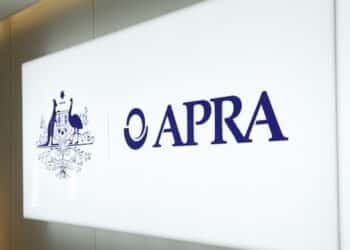From the moment Investor’s Advisor rolled off the press in 1999, regulation has been a red rag to the financial services bull.
Commissions versus fees, product sales versus advice; the excesses of compliance and the policing powers of regulators have put planners in the firing line for a decade.
“It is a case of moving with speed or die,” said Andrew Wheeler, then head of the Lonsdale Group in November 1999, who said planners needed to have robust business models if they were to survive increasing regulation
“The financial planning industry hasn’t fully matured yet,” financial services lawyer Peter Bobbin remarked in the October of 2000, four years after the damning findings of the 1996 Wallis inquiry.
The Financial Services Reform Act (FSRA) caused unprecedented regulatory upheaval as the industry was forced to extract itself from the sales stigma of the past.
Some failed in the task and were forced to exit. Others prospered.
The FSRA was finally introduced into parliament in October 2001 following several years of wrangling between political parties and stakeholders and endless delays by the states.
Regulation has toughened, bad apples are being weeded out and clients are better protected. Professional standards are the new buzz words. The Internet has made paperwork less onerous. Yet the old gripes continue. Are they justified?
“We are probably the most regulated industry in the world,” Ray Miles told Investor’s Advisor in 2000.
“That’s still the case,” Miles said when IFA contacted him last week.
The former head of Challenger-owned dealer group Genesys Wealth Advisers, who now runs his own practice, says the weight of Australian financial services regulation – higher than any other country – has benefited the consumer.
“I actually think it’s been good for the industry, it’s cleaned a lot of the rubbish out,” Miles says.
Over the past 10 years the technical problems that once occupied many hours and countless reams of paper have been replaced by newer, equally complex regulatory concerns.
A key issue in 1999 was the changes to capital gains tax in September of that year, which confused planners who struggled to order the concessions properly.
In 2000, 2001 and through into 2003, planners continued to battle with small business capital gains tests and the introduction of the GST.
Meanwhile other concerns gathered momentum – the effect of the family law legislation bill, payroll tax and the big one – what planners were required to do in relation to alienation of personal services income (APSI).
Planners argued they were being treated unfairly under the alienation law because they received the bulk of their income from commissions and fees that were distributed to them via their dealer group.
Lobbying efforts on APSI led to the Howard Government softening its stance, with then treasurer Peter Costello announcing in July 2001 that he would introduce a provision to ensure small planning firms were treated in the same way as other service providers and treated as if they had been paid directly by clients.
Then in 2003 ASIC took over the administration of the Corporations Law.
“We don’t want the industry to fear us,” an ASIC spokesman told IFA in October of that year.
Arguably, many have more reason to than ever as banning, enforceable undertakings and court actions rise each year.
Businesses rushed to transition to the Australian financial services licence regime during the early years of the naughties under the Howard Government.
Many small practices opted to move under the umbrella of a larger entity pre-FSR and the consolidation continued post-FSR.
However, a fear over an exodus into banks has not happened to the extent some had forecast.
CLERP 9, said at the time to be the most significant legislation to hit the financial services industry since FSR, was tabled in parliament in December 2003. It incorporated recommendations from the HIH Royal Commission.
Disclosure has had the biggest impact from FSR and is the one issue that has simultaneously caused the most headaches as well forcing the most non-compliant businesses to come clean on their fees, charges and rebate structures.
Just as the name continues to change – from IPS 146 in 1999, to PS 146 until 2007 and now RG 146 – debate continues over the minimum training requirement for life agents and authorised representatives.
These days, planners, fund managers and accountants are all hugely interested in the rise of self-managed superannuation funds (SMSF) but many have struggled to keep up to date on the myriad changes to the way they are regulated. This has led to a proliferation of SMSF support services being marketed heavily to the industry.
The Australian Taxation Office took over regulatory control of SMSFs in 2004 and continues to increase its watch side by side with the Superannuation Industry (Supervision) Act.
The market slump of 2002/03 was followed by five years of unprecedented growth in the financial markets, arguably reaching its height in the June 30 super rush last year. During that time the advice industry made huge gains despite the ever-present FSR spectre.
The freefall since August’s market correction may have battered confidence but a decade of reform has built investors’ money on more solid foundations.







